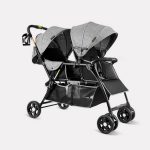
Before you shop for an induction cooktop or range, consider your budget and your cooking habits. Here’s what you need to know.
Induction cooking feels very different from cooking with gas. Some avid cooks really love cooking on a flame and the immediate visual feedback they get from it at the turn of a knob. No electric option, even induction, can replicate that feel. In fact, because the electromagnetic field on an induction cooktop doesn’t create a glow, you won’t even know it’s on. That’s why manufacturers have started adding virtual flames and other lighting cues.
It can get expensive when you convert from gas to electric. If you’re replacing an electric range, the swap is simple. Induction cooktops and ranges use the same outlet as a standard electric range or cooktop. But if you’re switching from gas, expect to pay an electrician several hundred dollars or more to install the necessary outlet.
You need the right cookware. While most of the cookware in our ratings is induction-compatible, some pans—including those made of aluminum and anodized aluminum—won’t work on induction. Most others, including stainless steel and cast iron, will. If you’re shopping for cookware for induction cooktops, look for pots and pans marked “induction-compatible.” To determine whether your existing arsenal of cookware will work with an induction range, see whether a magnet strongly sticks to the bottom of your pots. If it does, they’ll work on an induction burner.
It might emit a sound. “A buzz or hum is common, and often louder at higher settings,” says Tara Casaregola, who oversees the testing of ranges and cooktops for Consumer Reports. “And we often hear the clicking of element electronics at lower settings, as well as the sound of the cooling fan for the electronics.” Heavy flat-bottomed pans help reduce the vibrations that cause this buzz.
You may need an analog thermometer. The magnetic field of an induction cooktop can interfere with a digital meat thermometer.
Induction cooktops and ranges are typically more expensive than conventional electric models. But prices have continued to drop in recent years despite inflation, with a recommended induction range in our ratings selling for about $1,300. And buying a new induction cooktop or range may make you eligible for rebates from the Inflation Reduction Act.
To learn more about induction, see our cooktop and range buying guides. CR members can also browse our full list of ratings for induction cooktops and ranges. Here, we’ve highlighted two of the best induction ranges in our ratings, as well as the best 30-inch and 36-inch induction cooktops









